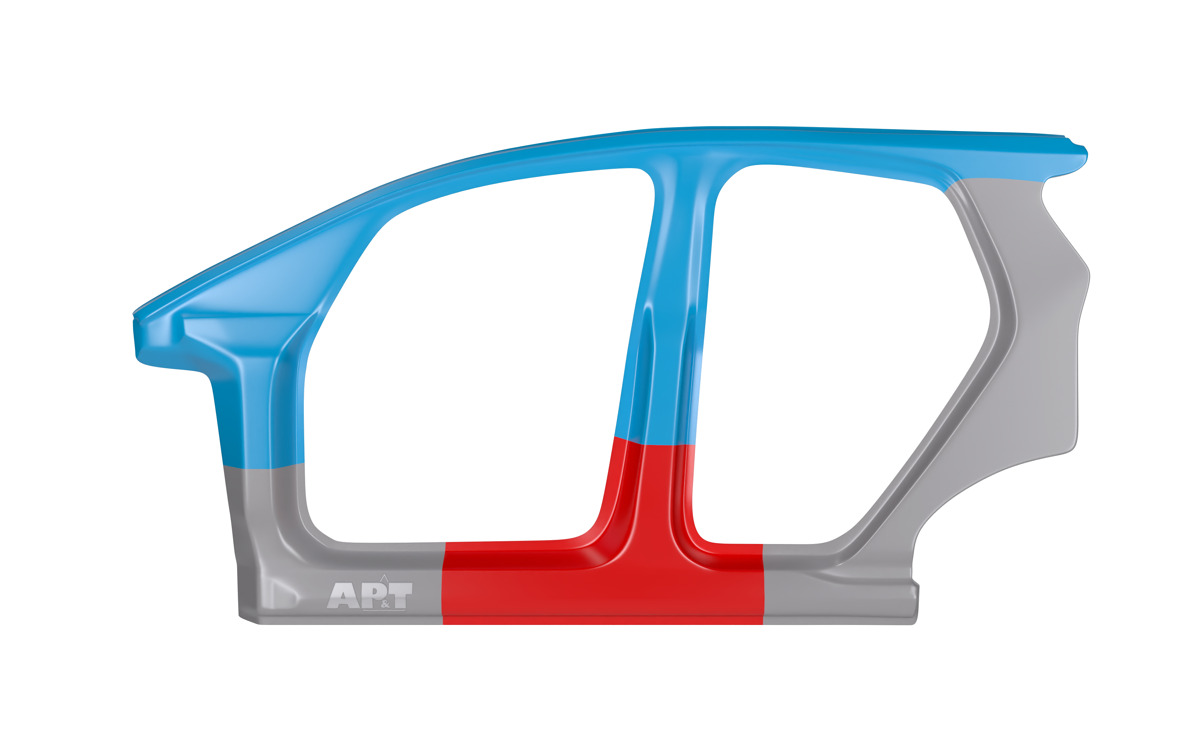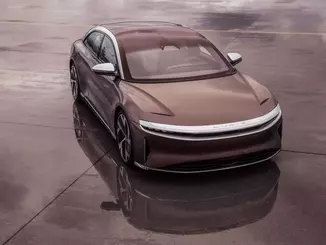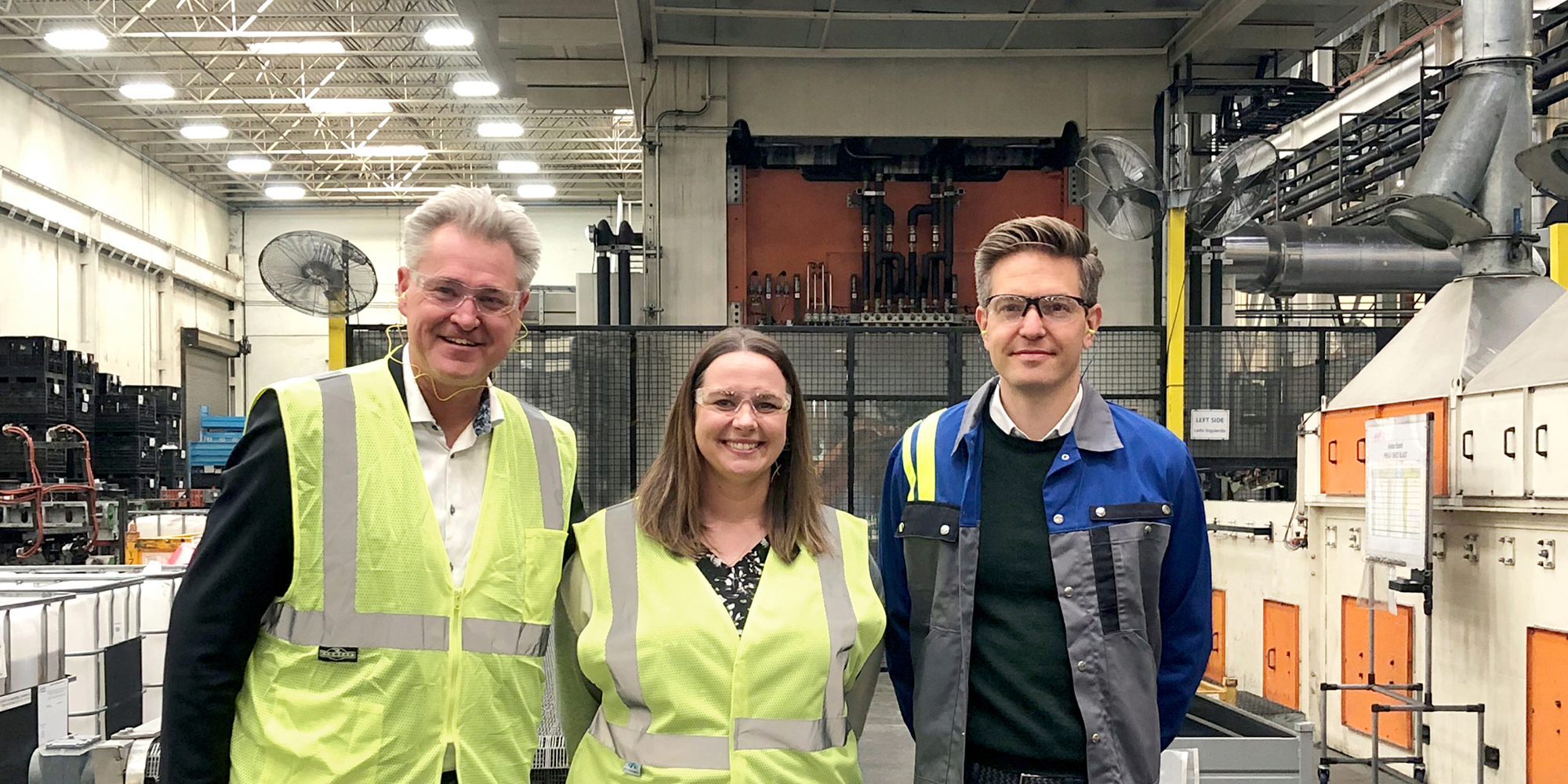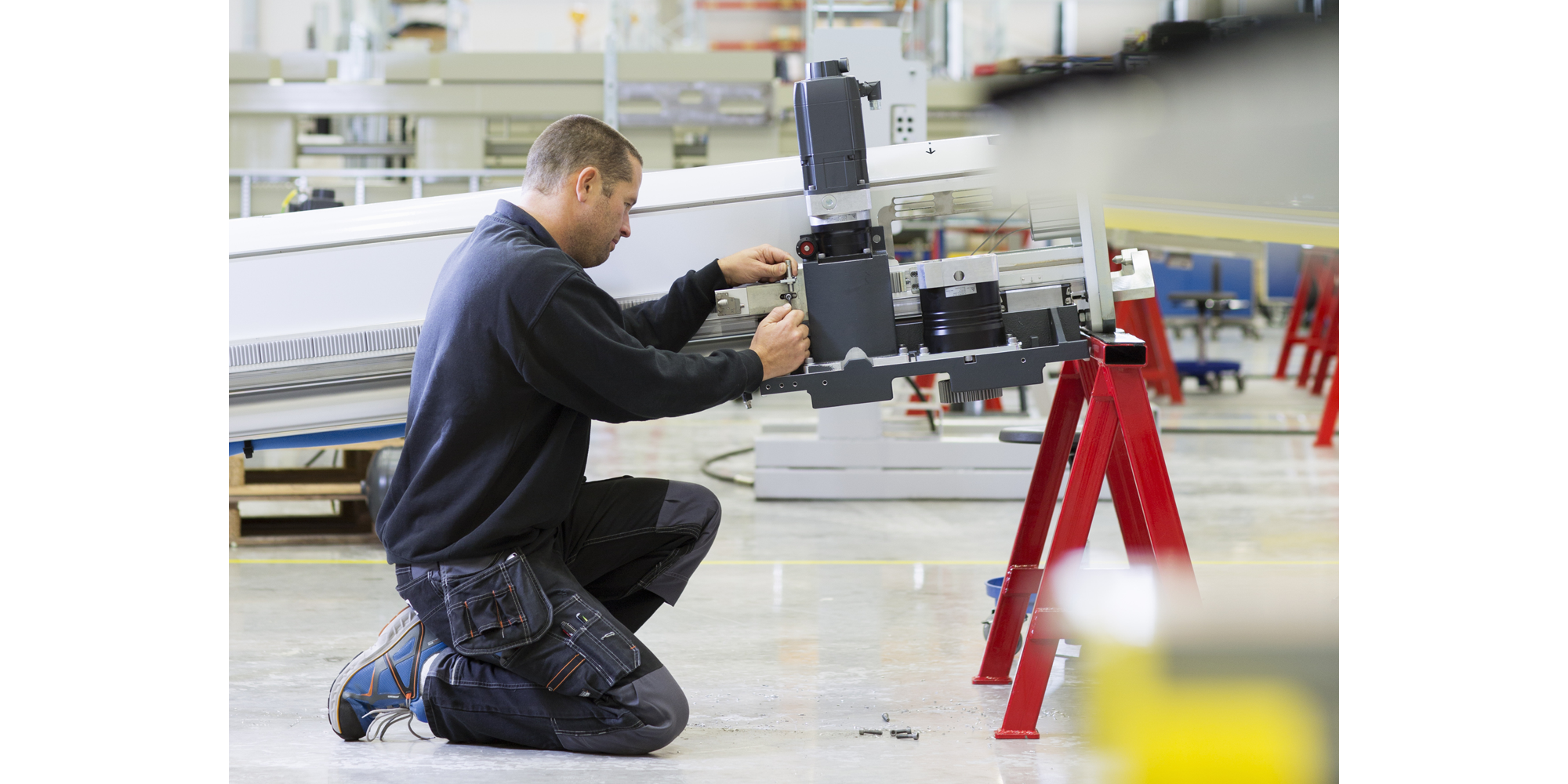
Better material utilization, lower weight, reduced climate impact and simpler production – these are all reasons for the automotive industry’s interest in press-hardened body components made from large blanks consisting of many smaller welded parts. Take Multi Part Integration (MPI) from ArcelorMittal, for example. This concept is well suited to AP&T’s press hardening lines. AP&T has had a production line for manufacturing double door rings in commercial operation at a customer since fall 2023.
“With MPI, parts with different material properties can be integrated into one and the same circuit board. The individual parts are custom-welded without overlapping, which means less material is used. The weight of the board is reduced without compromising strength and impact resistance,” explains Jan Larsson, Business Developer at AP&T.
The material savings not only lead to lower costs, but also to a lower impact on the climate. Most of the climate impact caused by a press-hardened part during its life cycle can be traced back to the production of the steel. It is therefore very important from a climate point of view to use materials efficiently. The weight reduction also has a positive effect on the energy consumption and CO2 emissions of the finished vehicle.
MPI also simplifies production for car manufacturers. As the components are manufactured from one large circuit board instead of many small ones, fewer work steps and tools are required and less space is needed in the production hall.
“A double door frame can consist of five or six different parts that normally have to be stored, moved, formed and assembled in the factory. With MPI, you save time and achieve a less complex process,” says Larsson.
Having supplied over 150 press hardening lines to customers worldwide to date, AP&T now sees great opportunities in the growing interest in MPI. “With our modular range of presses, linear robots and ovens, we can always develop and offer an optimized line regardless of the type of parts to be produced. When it comes to the production of large components, our concept of electric, energy-efficient and compact multi-layer furnaces (MLF – Multi Layer Furnace) is ideally suited. Our multi-layer furnace requires only a fraction of the floor space of a conventional roller hearth furnace,” explains the company’s Business Manager of Line Solutions, Lennart Johansson.
Over the years, AP&T has sold a total of 70 of these ovens. The third generation with seven chambers up to a size of 3,000 x 2,000 mm is now in use. Each line can be equipped with up to four ovens, which offers a high degree of flexibility. In addition, the ovens have few moving parts and require only a minimum of maintenance, resulting in high system availability.
“The line concept itself lays the foundation for climate-friendly production. Firstly, through our energy-efficient, reliable machines, and secondly through our ‘360° Lifetime Performance Offer’, which means that we optimize, upgrade and maintain the line over time so that it delivers outstanding performance throughout its entire life cycle and has minimal impact on the climate,” explains Johansson.
AP&T is now focusing on its offering for press hardening large blanks. “We have the technology and the process expertise. However, the most important thing for good results is that the component is designed with this manufacturing process in mind from the outset. We therefore encourage early and close cooperation with the car manufacturers’ designers,” summarizes Larsson.
Web:
aptgroup.com/en



